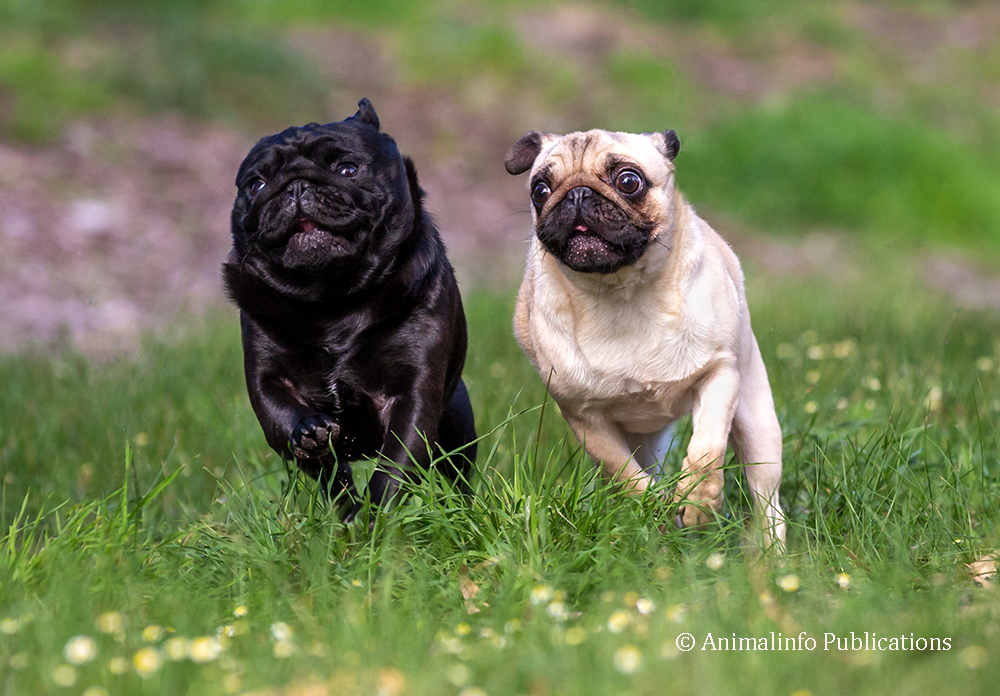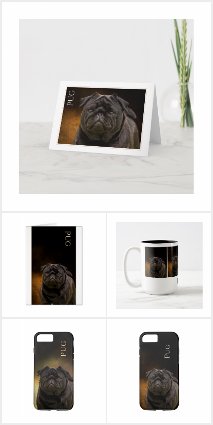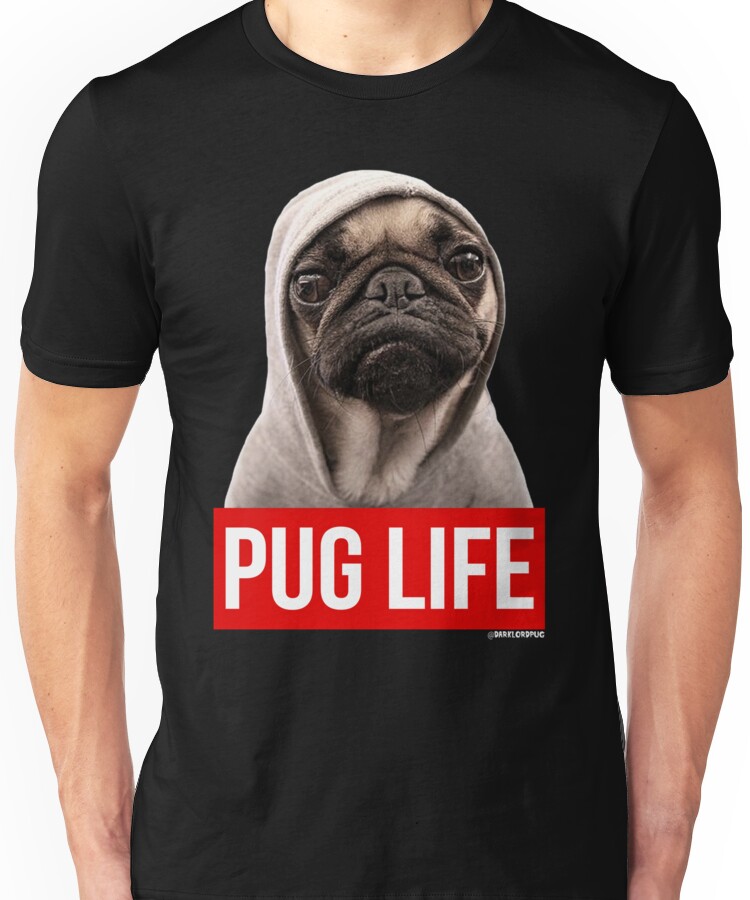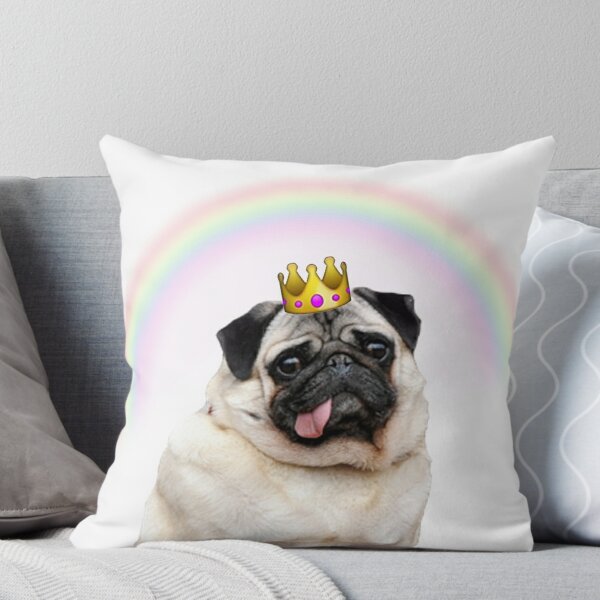Breed Type
Toy or Companion
History
In ancient China, the Pug was bred to be the companion of emperors. It arrived in Europe in the 16th century where it was also a royal companion - it made the history books as the famous pet of Josephine Bonaparte. Today it is one of the most popular companion animals around the world - whether you are royalty or not!
Description
The Pug's most unique feature is the head - viewed from the side the face appears flat and has well defined facial wrinkles. The eyes are round, dark and slightly protruding whereas the ears may be button or rose shaped. The jaw is wide and slightly undershot. The body should be square and compact leading to the famous tail which is set high and curled tightly over the hip.
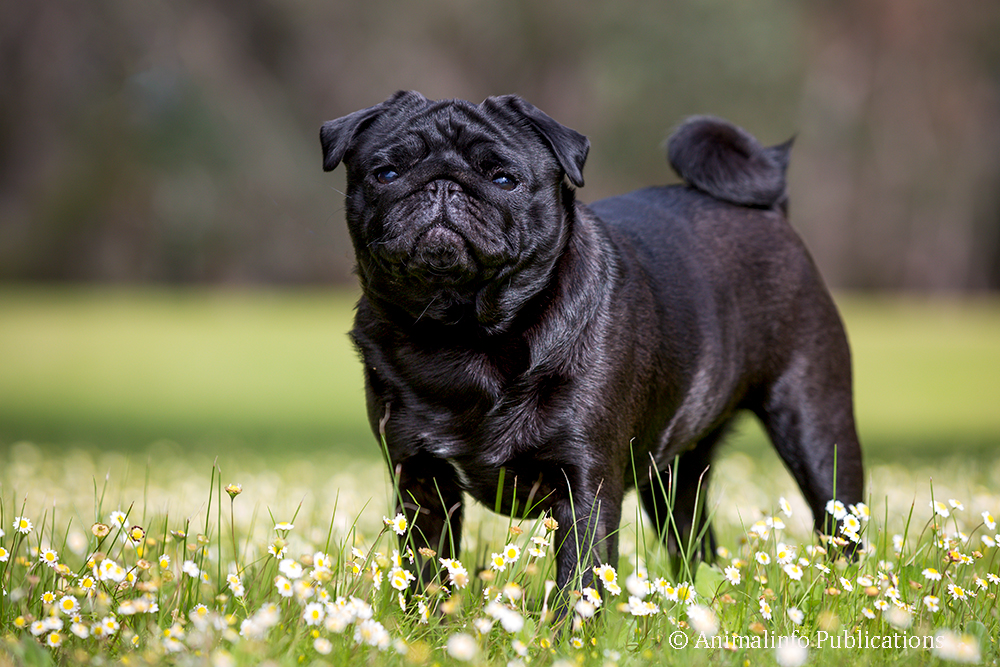
Size
The weight range if 14-18lb (6.3-8.1kg) for both dogs and bitches. The Pug's body length should be equal to or less than its height.
Coat
The coat is fine, smooth and soft with an undercoat and overcoat. Be warned the Pug does shed huge amounts of hair throughout the year and will require regular grooming to keep this shedding under control.
Temperament
The Pug is famous for its lovable personality. They are of good sound temperament as you would expect for a dog famous for its companionability. They are intelligent and can be wilful at times. They also have a strong need to be part of the family and can even be clingy - needing to follow you around the house when you are home.
The well socialised Pug is great with children and other animals.
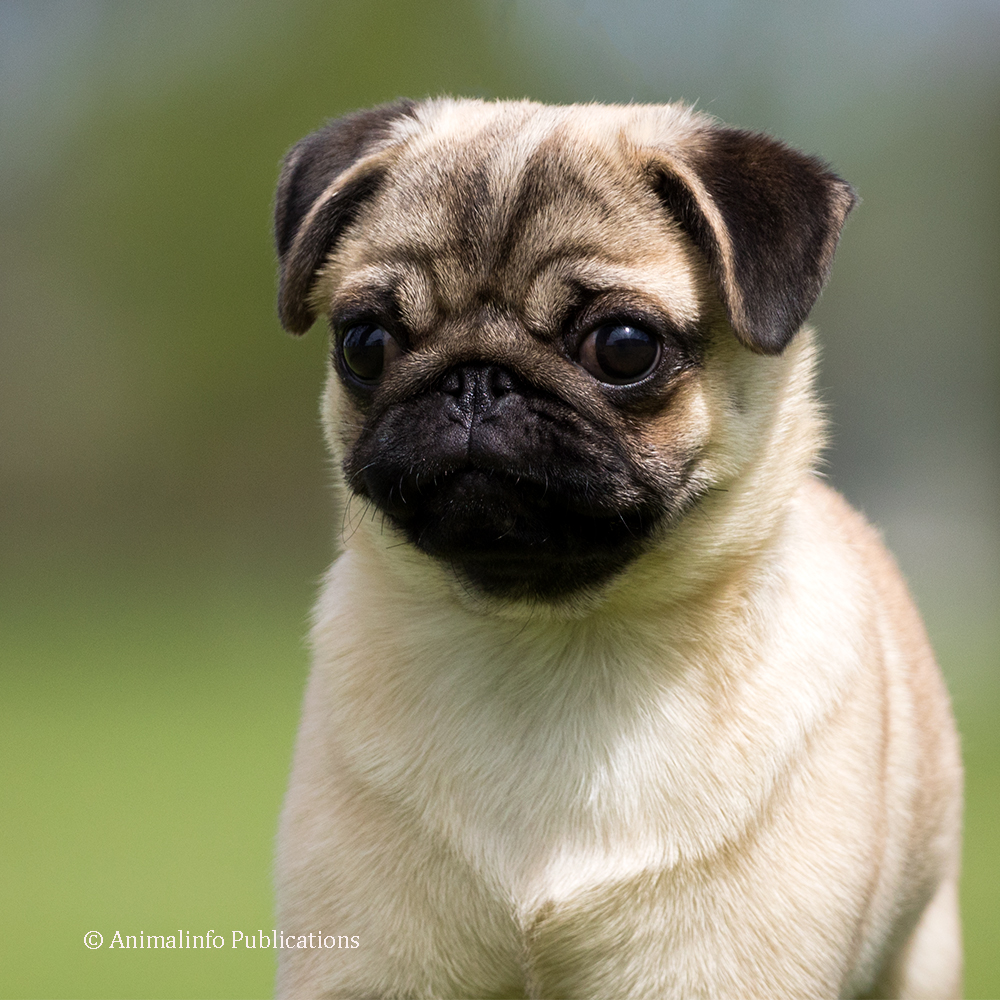
Longevity
12-14 years
Health
The Pug does need regular care to ensure it stays in the best condition. The facial wrinkles need to be cleaned and monitored for infection on a regular basis. Their diet must also be closely monitored as the Pug is prone to overeating and if it becomes overweight will be prone to many health problems. Like any dog they need regular exercise but need to be closely monitored for over exertion and heat stroke.
Possible Genetic Disorders
Being a brachycephalic breed (squashed in face) - Pugs are prone to problems such as Brachycephalic syndrome and are extremely vulnerable to heat stroke. They also commonly suffer from Dry Eye and Exposure Keratopathy Syndrome. Breeding Pugs should all have their hips scored for hip dysplasia and potential owners should also be aware of problems such as Skin Fold Dermatitis and Atopy. The breed can also suffer from Pug Dog Encephalitis.
Best Suited
- For those wanting a devoted companion - the Pug is literally a lap dog!
- For owners willing to put in some time to regular health care
- For people with a great sense of humour
Worst Suited
- For people who are away from home for long periods of time
- For people wanting a back yard dog


